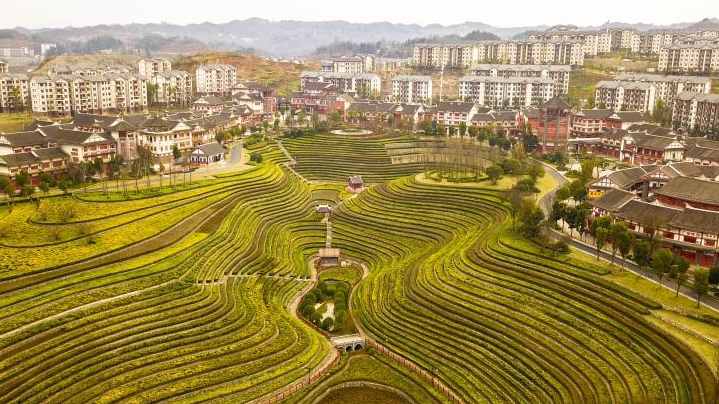
Editor's note: Decision Makers is a global platform for decision makers to share their insights on events shaping today's world. Li Xin is the Deputy Director-General of the International Poverty Reduction Center in China. The article reflects the author's opinions, and not necessarily the views of CGTN.
On February 25, Chinese President Xi Jinping announced China's complete success in eradicating absolute poverty. Over the past eight years, China has lifted 98.99 million impoverished rural residents out of poverty, and achieved the UN 2030 Agenda for Sustainable Development 10 years ahead of schedule.
As a member of the International Poverty Reduction Center in China, I was often asked about China's anti-poverty experiences on international occasions. Anti-poverty experts from other developing countries are curious about the differences between China's practices and those of other countries in poverty reduction.
Whether China's model could be copied in other developing states is one of the most frequently asked questions.
There's no denying that poverty is one of the biggest headaches facing humanity, and anti-poverty has been a key issue in a country's governance since the ancient times. China has offered Chinese solutions to this problem.
To fight against poverty, it's imperative to understand its causes. It's true that people are poor for different reasons, but the root causes are not different among different countries: people being deprived of resources.
In China, the top three factors contributing to poverty are a lack of funding, chronic diseases and labor shortage. Other developing countries are facing similar scenarios.
But countries are adopting different anti-poverty policies. While China adopts a targeted poverty alleviation strategy, other developing nations' policies are more relief-based than offering house-to-house solutions.
China's targeted poverty alleviation policy follows four steps: locate the poor; designate specialized personnel to help them; introduce targeted door-to-door supporting mechanisms; and remove them from the poverty list with tailor-made assistance projects.

A newly built community for poverty alleviation relocation at ancient Shexiang Town of Dafang County, southwest China's Guizhou Province, December 24, 2020. /Xinhua
A newly built community for poverty alleviation relocation at ancient Shexiang Town of Dafang County, southwest China's Guizhou Province, December 24, 2020. /Xinhua
To combat poverty, China has set up a nationwide database to identify the people in need. It has also established a comprehensive political system to analyze the causes of their poverty, mobilize different governmental organs to jointly act against poverty, and design more tailor-made assistance plans.
The Chinese government has made huge investments in poor areas. Apart from fiscal inputs, the government has invited third parties to evaluate and monitor the anti-poverty causes.
Some of China's measures, for instance, the third-party evaluation system and door-to-door assistance projects, can be applied to other countries. China's market-oriented reforms and its economic transformation, which is a boost to non-farm employment, also prove to be effective in the combat against poverty. China has the political will from the top and the ability to mobilize grassroots cadres to help the poor.
But it's worth noting that each country has its distinctive national conditions. Directly copying other countries' anti-poverty experiences may not work. It's time-tested that all policies must adapt to the country's own national conditions. Before copying others' anti-poverty practices, policymakers should understand that a trial stage is a must.
China has been actively promoting international cooperation on poverty reduction. It fulfills its international responsibilities by providing assistance to other developing countries within its capacity.
For instance, China's poverty reduction cooperation projects with ASEAN countries and Africa turn out to be successful. The pilot anti-poverty projects in Laos, Cambodia and Myanmar are examples of the success application of China's poverty alleviation strategies and can be seen as models for future cooperative programs.
To analyze the anti-poverty achievements in the three countries, we conducted a field study by talking with local people there. We selected six villages all together – two villages in each country, and found that China's targeted poverty alleviation strategy and its financial support have played a key role in eradicating poverty there.
China's anti-poverty policy was formulated following more than 40 years' practice. China is willing to share its experiences with the vast number of developing countries for building a community with a shared future for mankind.
(If you want to contribute and have specific expertise, please contact us at opinions@cgtn.com.)

